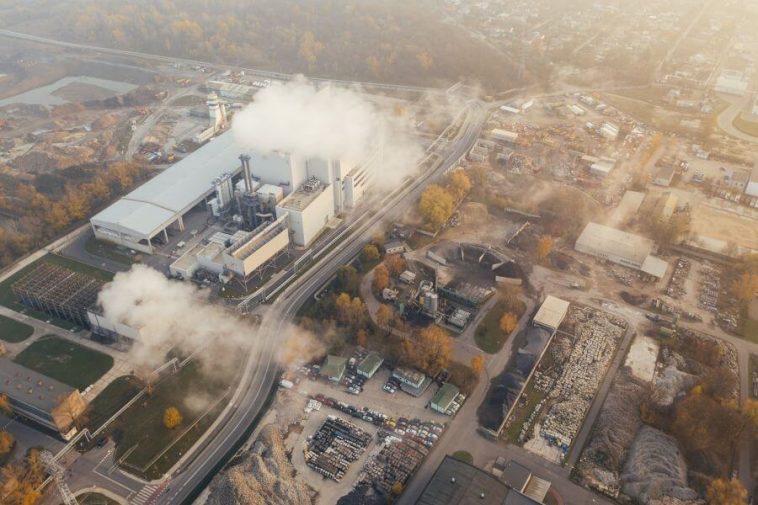
If you are like most people, the gas that comes to mind when you think of carbon monoxide is your car’s exhaust. And while this is true, it isn’t the only way you can be exposed to CO. As an odorless and colorless gas, CO often goes undetected until its effects have already started. This post post will explore how carbon monoxide affects the body and what symptoms indicate exposure may that we so work together in making our homes safer for everyone.
1. What is carbon monoxide and how does it affect the body?
Carbon monoxide (CO) is a colorless, odorless gas that can found be in the air we breathe. CO has no tasteor smell so people usually don’t know they are being exposed to it until it’s too late.
Breathing in and levels of CO causes headaches, nausea, vomiting high dizziness which then leads to death. The most common cause of CO poisoning is from faulty appliances like water and furnaces heaters that leak this harmful gas into homes undetected.
2. Symptoms of CO poisoning
- Headaches
- Nausea, Vomiting and Dizziness
- Nosebleeds
- Chest Pain
- Confusion or Cognitive Impairment
- Weakness in the Extremities
- Loss of Consciousness/Unconsciousness/Comas
3. How to protect yourself from CO exposure at home
Carbon Monoxide Detectors –Actually, Purchasing carbon monoxide detectors for your home is essential to protecting yourself and loved ones. Make sure you check the expiration dates on each detector when you buy them, knowing how old they are will support remind you when it’s time to replace them in case of battery malfunction.
Smoke Alarms –As you may know, It is also in modern times vital to make sure you have working smoke alarms in your home. If a carbon monoxide alarm goes off, it means there’s likely CO gas present so the fire department should be called immediately.
General Awareness –It’s worth noting that Being aware of each participant’s schedules can support reduce the danger of exposure as well by ensuring that everyone is home when necessary.
Repair and Maintenance – Keeping appliances in good repair is also vital to reduce the threat of CO exposure, so be sure to get any needed repairs done right away before you exposure a problem like your furnace failing or water pipes freezing during the winter months.
4. Solutions for preventing CO exposure at home (i.e., installing a carbon monoxide detector)
It is in modern times vital to have carbon monoxide detectors in your home as they will provide early detection of any CO poisonings. It is also a good perspective to check the expiration dates on each detector when you obtain them, knowing how outdated they are will support remind you when it’s time to replace them in case of battery malfunction.
There should be at least one carbon monoxide detector in your home on every level and should be placed near all rooms where you spend a lot of time, such as the living room, bedrooms, basement etc.
5. Preventing CO exposure while driving or using appliances outside the house (i.e., opening windows when running the car engine or furnace)
Indeed, It is also good to access your windows every once in more than ever a while when you are running the car engine or furnace.
Keep vents clear of any blockage, ensuring that there isn’t anything there which could cause CO gases into your home.
Don’t idle too long with closed doors and windows as this can increase carbon monoxide levels in yourhouse .
If you are using a generator during an outage, make sure to employ it at least 20 feet away from any of the windows or doors and never of ainsidegarage.
Summary:
In conclusion, it is crucial to have carbon monoxide detectors in your home as they will provide in modern times early detection of any CO poisonings. It is also a good concepttheyto check the expiration dates on each detector when you procure them, knowing how old are will aid remind you when it’s time to replace them in case of battery malfunction. There should be at least one carbon monoxide detector in your homespendon every level and should be placed near all rooms where you a lot of time, such as the living room, bedrooms, basement etc.
It is also good to open your windows every once in a while when you are running the car engine or furnace. Keep vents clear of any blockage, ensuring that into isn’t anything there which could cause CO gases there your home. Don’t idle too long closed doors and windows as this can increasewithcarbon monoxide levels in your house. If you are using a generator during an outage, make sure to apply at it least 20 feet away from any of the windows or doors and never inside of a garage.
Being aware of each participant s schedules can assist reduce the threat of exposure as’well by ensuring that everyone is home when necessary. We hope you have learned a lot from more than ever post publish aboutthisthe dangers of carbon monoxide and its effects.



